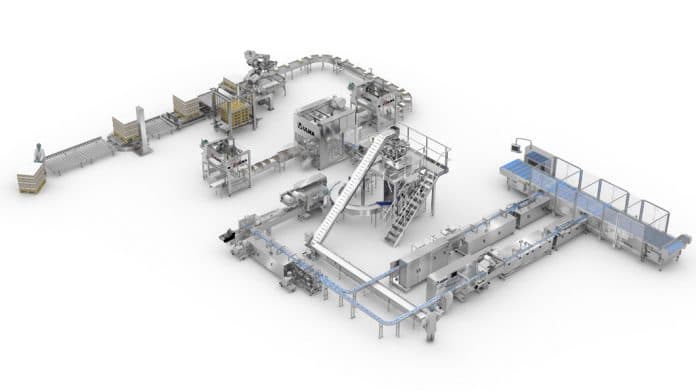 In an age of economic uncertainty, achieving a faster, more efficient and less labour-intensive production process is becoming ever more important for small to medium enterprises (SMEs). Steve Craddock, Business Manager – Automation Projects at ULMA Packaging UK, explains how automated packaging technology can help SMEs thrive in tumultuous times
In an age of economic uncertainty, achieving a faster, more efficient and less labour-intensive production process is becoming ever more important for small to medium enterprises (SMEs). Steve Craddock, Business Manager – Automation Projects at ULMA Packaging UK, explains how automated packaging technology can help SMEs thrive in tumultuous times
The diverse nature of the manufacturing sector has driven the ongoing evolution of packaging machinery, leading to increasingly more sophisticated equipment being employed by businesses. Taking advantage of the benefits that automation has to offer could increase operational efficiency and lower labour costs, providing an SME with the stability needed to thrive and expand production.
SMEs could benefit significantly from the adoption of smarter packaging solutions to keep up with the diverse range of products that they produce. This is a significant consideration as the quantity of product produced will influence the type of machinery chosen. For instance, automated lines come to the fore when larger volumes of product need to be processed and packed at speed. Though it is worth remembering that automated solutions work optimally when they are dedicated to just one or two products only.
This means that, for SME providers of products such as hamburgers or meat fillets, this type of solution would open up new opportunities for expansion by boosting output at a lower overall cost. Rather than starting from scratch, bespoke automation solutions can be applied to many existing lines. The central point to be aware of though, is that automation doesn’t necessarily equal robots or have to be very complicated. Some of the best automated packaging lines are very simple in design.
For example, Border Biscuits Ltd, which produce over 300,000 packets of biscuits per week at its Lanark factory, worked with ULMA Packaging UK to install a packaging line including two Atlanta Hi-tech flowrappers with Dakota infeed units. Following the completion of the project, packets of biscuits are now automatically carried into carboard containers for storage and distribution – doubling the output of its top-selling range.
For SMEs that are happy with their existing packaging setup, end of line automated solutions could also be an option. Automation can be introduced in the final stages of the line to include a loading system, so that packaged goods can be placed into baskets/pallets ready for delivery. Valuable human labour can then be placed elsewhere in the business to help with more complex tasks.
While automation may mean robotics to some people, the beauty of automation is that with the help of experts, bespoke solutions can be designed and trialled without being too complicated.
SMEs who make the switch from manual or semi-automated packaging lines to automated solutions could find that they are able to reduce operational costs while maximising product output.
Pictured: Steve Craddock, Business Manager Automation Projects, ULMA Packaging UK


